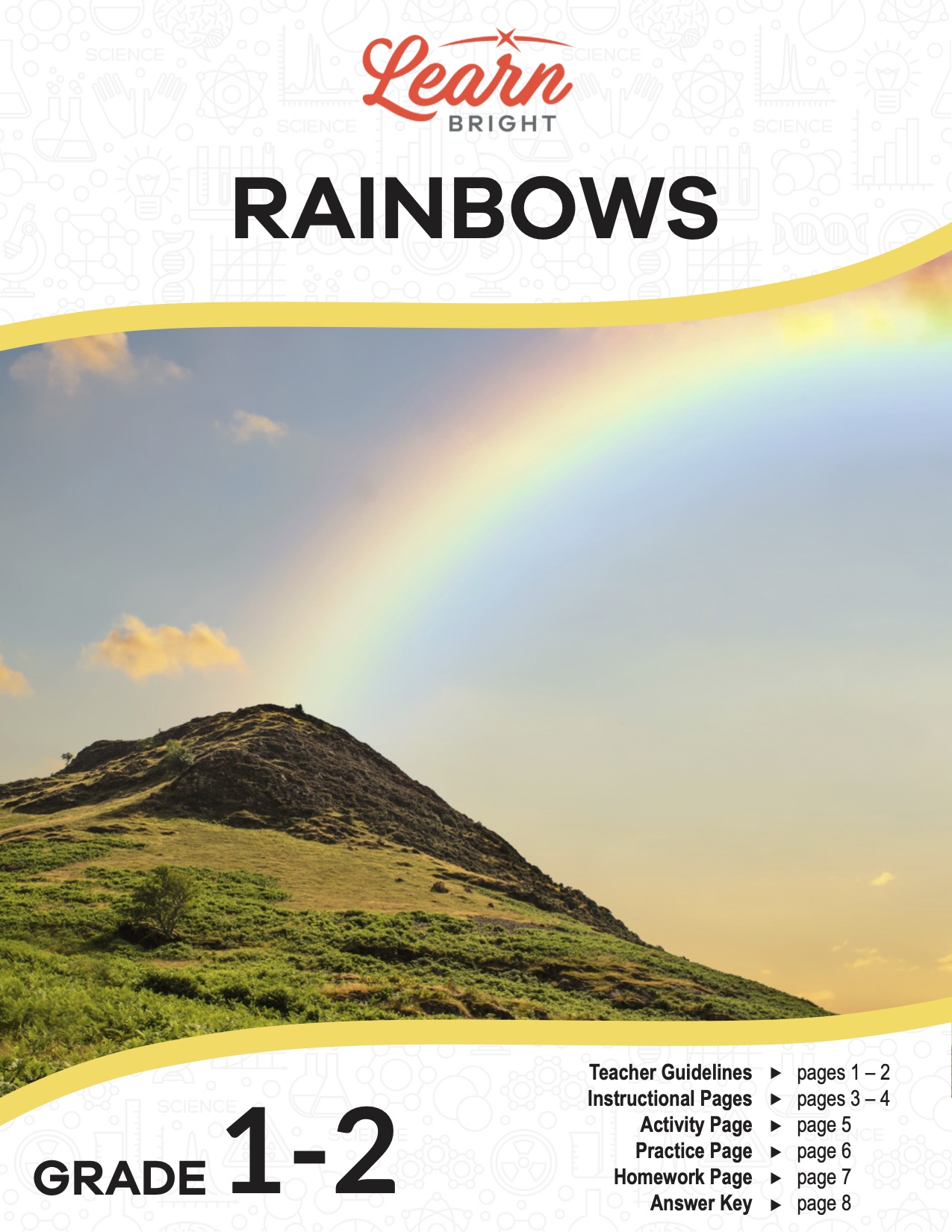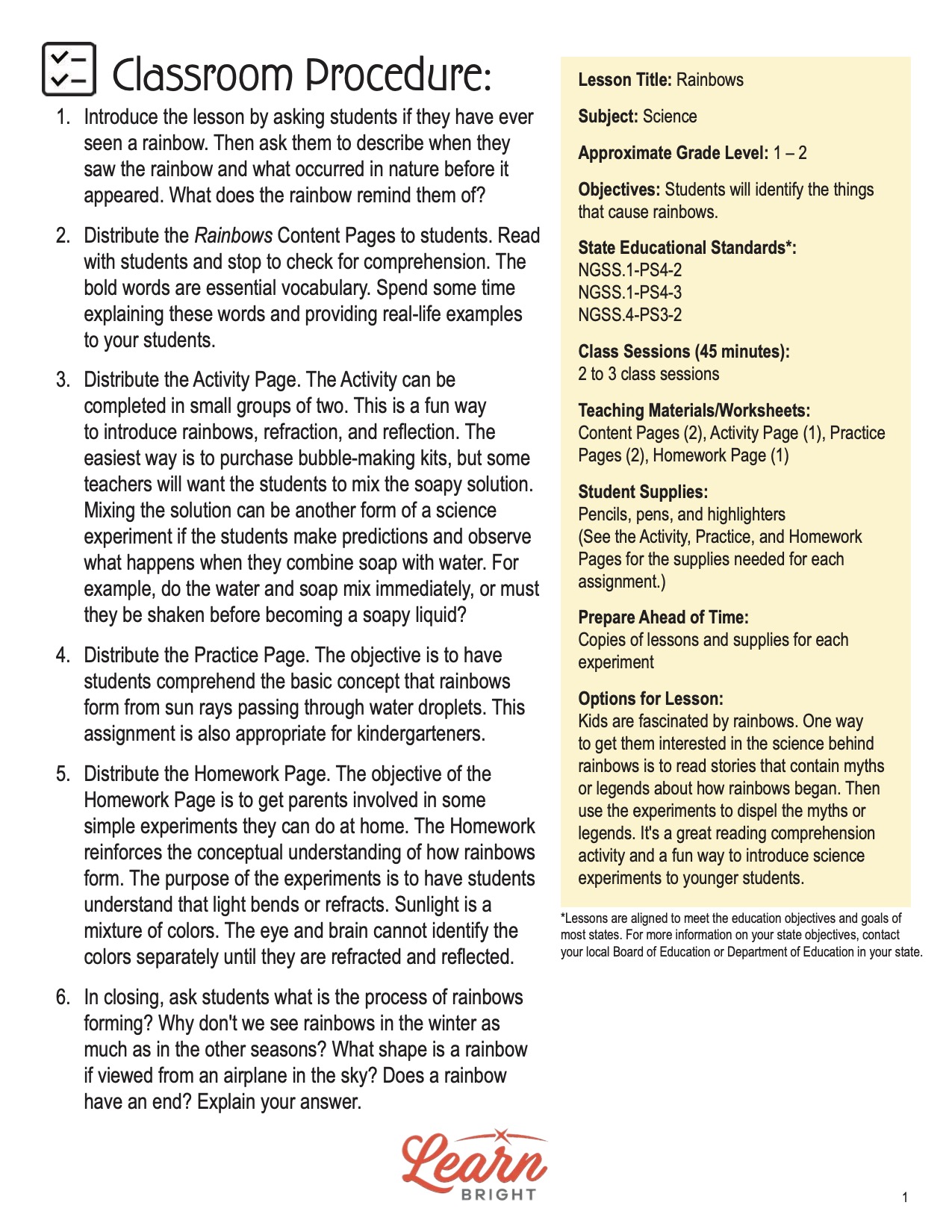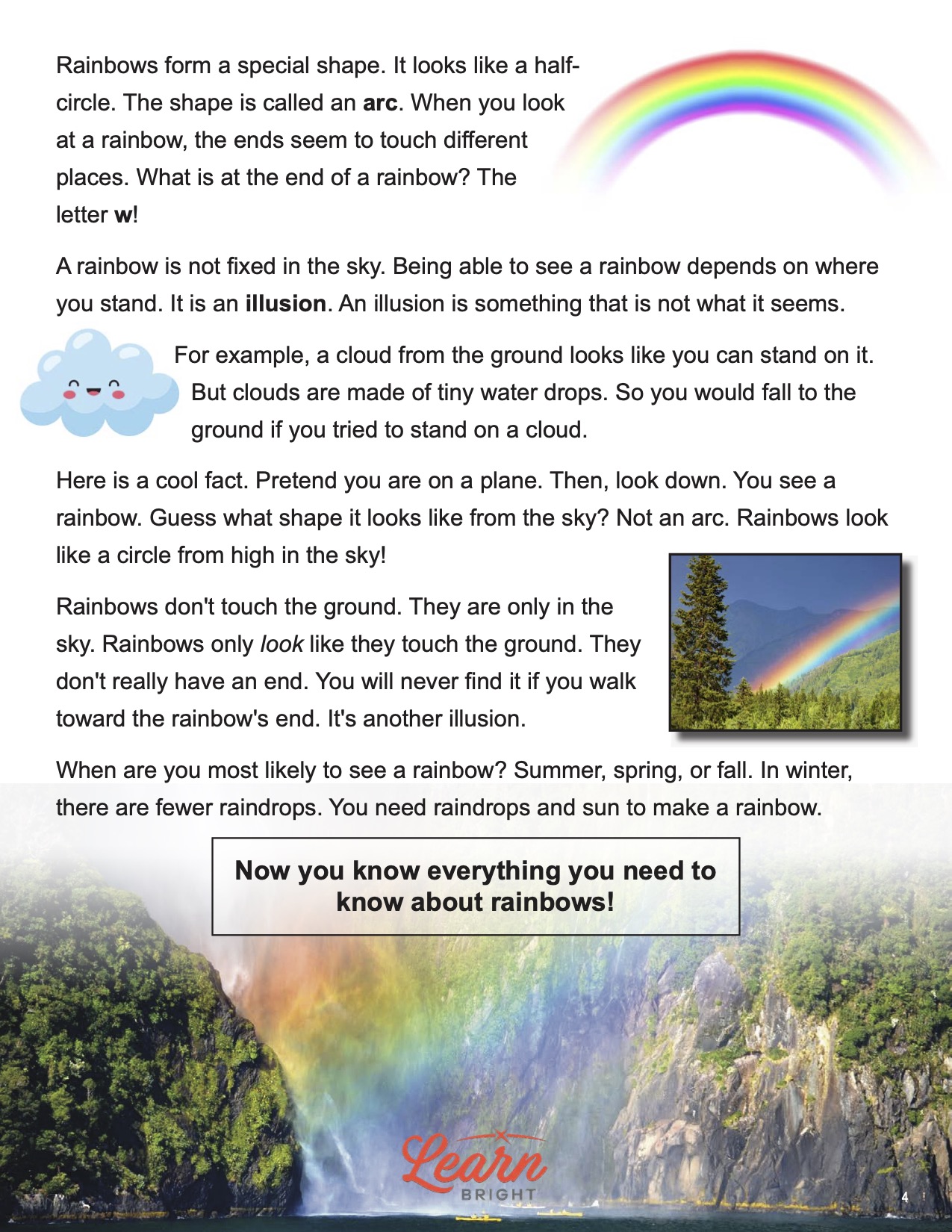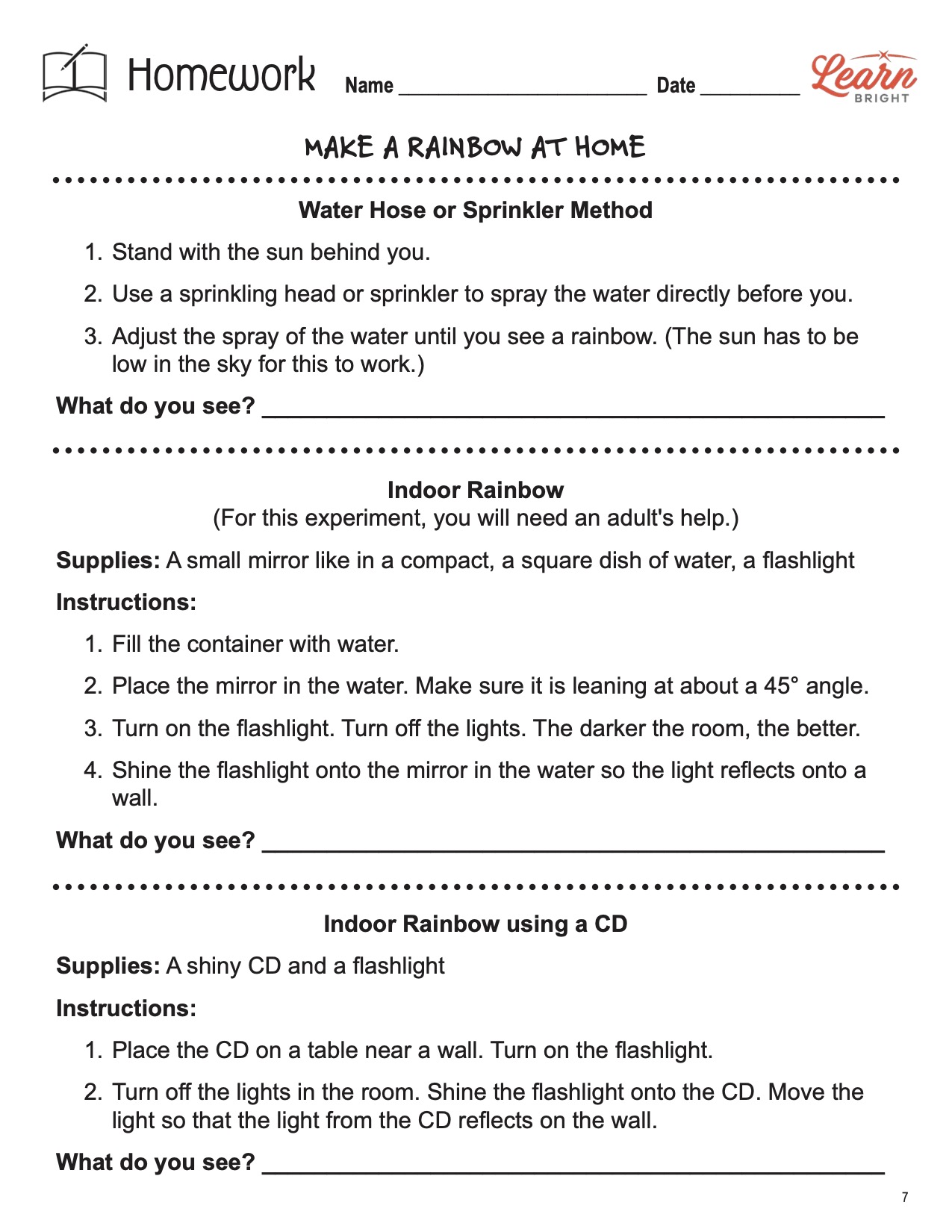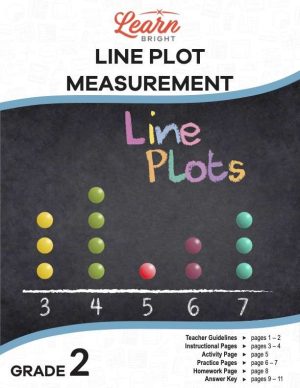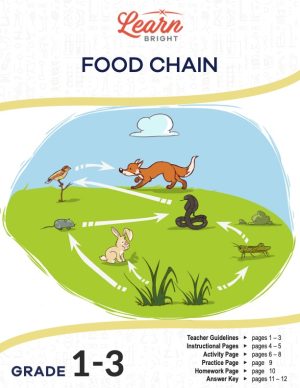Description
What our Rainbows lesson plan includes
Lesson Objectives and Overview: Rainbows explores the science behind why we see these colorful ribbons in the sky after rain. Students will identify the different colors and explain how, when, and why rainbows appear in the sky. They will also learn other interesting facts as they progress through the content. This lesson is for students in 1st grade and 2nd grade.
Classroom Procedure
Every lesson plan provides you with a classroom procedure page that outlines a step-by-step guide to follow. You do not have to follow the guide exactly. The guide helps you organize the lesson and details when to hand out worksheets. It also lists information in the yellow box that you might find useful. You will find the lesson objectives, state standards, and number of class sessions the lesson should take to complete in this area. In addition, it describes the supplies you will need as well as what and how you need to prepare beforehand. For the activity, supplies you need include dish soap, water, and a large, deep spoon such as a ladle. The practice requires scissors, glue, and colored pencils or markers.
Options for Lesson
The “Options for Lesson” section of the classroom procedure page outlines additional activities or variations that you can use when presenting this lesson to your students. Kids are fascinated by rainbows. One way to get them interested in the science behind rainbows is to read stories that contain myths or legends about how rainbows began. Then use the experiments to dispel the myths or legends. It’s a great reading comprehension activity and a fun way to introduce science experiments to younger students.
Teacher Notes
The paragraph on this page gives you a little more information on the lesson overall and describes what you may want to focus your teaching on. It suggests you teach this lesson along with others that relate to light. You could also choose to administer it after a rain storm and have students go outside to find the rainbow. The blank lines are available for you to write out any thoughts or ideas you have as you prepare.
RAINBOWS LESSON PLAN CONTENT PAGES
How Rainbows Work
The Rainbows lesson plan has two content pages. The sun is very bright. So bright that we call it white light. White light is a mixture of all the colors we can see. The white light passes through raindrops. The light bends, splitting it into seven colors. Can you guess what the colors are? That’s right! Red, orange, yellow, green, blue, indigo, and purple.
Rainbows form a special shape. It looks like a half-circle. We call this shape an arc. When you look at a rainbow, the ends seem to touch different places. A rainbow is not fixed in the sky. Being able to see a rainbow depends on where you stand. It is an illusion. An illusion is something that is not what it seems to be. For example, a cloud from the ground looks like you can stand on it. But clouds are made of tiny water drops. So you would fall to the ground if you tried to stand on a cloud.
Here is a cool fact. When you are up in the sky on an airplane, rainbows do not have the arc shape. Instead, they look like full circles! In addition, rainbows don’t touch the ground. They are only in the sky. Rainbows look like they touch the ground. However, they do not have an end. Once again, it’s an illusion.
Generally speaking, you are most likely to see rainbows in the summer, spring, or fall months. In winter, there are fewer raindrops. You need raindrops and sun to make a rainbow.
RAINBOWS LESSON PLAN WORKSHEETS
The Rainbows lesson plan includes three worksheets: an activity worksheet, a practice worksheet, and a homework assignment. These worksheets will help students demonstrate what they learned throughout the lesson and reinforce the lesson concepts. The guide on the classroom procedure page outlines when to hand out each worksheet to your students.
RAINBOW EXPERIMENT ACTIVITY WORKSHEET
Students will have fun creating their own rainbows during the activity. The worksheet lists the supplies students will need to complete the experiment. Students will follow the directions on the worksheet and then answer a series of questions based on what they learned during the experiment.
CUT AND COLOR PRACTICE WORKSHEET
The practice worksheet provides a number of images for students to cut out. First students will color the different parts. Then they will glue each one to a white sheet of paper to create a picture of a rainbow.
RAINBOWS HOMEWORK ASSIGNMENT
For the homework assignment, students will get to create a rainbow at home. With an adult’s help, they will follow the directions to do one or more of the experiments to create a rainbow. One uses a water hose or sprinkler. Another uses a small mirror, water, and a flashlight. The last uses a CD and a flashlight. For each one, students will answer the question “What do you see?” at the end of the experiment.
Worksheet Answer Keys
The answer keys for the practice and homework worksheets are at the end of the lesson plan document. In this case, the nature of the worksheets does not warrant any specific right answers. You can use them as guides. If you choose to administer the lesson pages to your students via PDF, you will need to save a new file that omits these pages. Otherwise, you can simply print out the applicable pages and keep these as reference for yourself when grading assignments.

